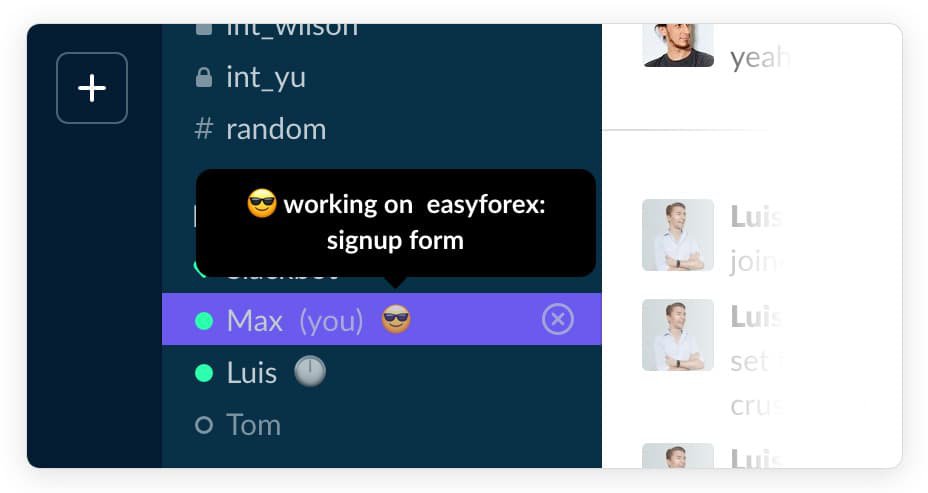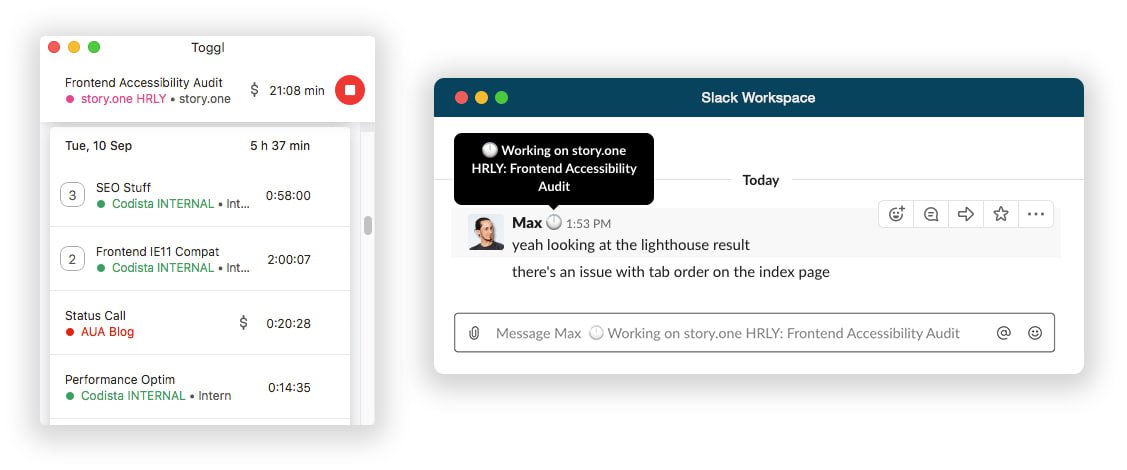Parts of our team at Codista has been working remotely since we founded our specialized agency. Having the option to work from home provides a lot of benefits - you save time commuting, it gives you the freedom to work from wherever you want, and often it is just more convenient (or even safer) to stay home. I personally like to work from home because I feel more focused and creative there.
However, working in a distributed team also comes with some challenges. One of these challenges is “missing shared context”. If you are not in the same room as your colleagues, you just cannot see what they are doing. If you see your colleague walking into the meeting room, you know they are probably having a meeting or doing a video call. If you see your teammate staring very concentrated at their screen, you know that you probably should not disturb them.
Getting an overview
If you are in a position to manage a team and steer it into the right direction, it is even more important to have a high-level overview of what everybody is doing. This “missing context” can be really challenging for remote teams, and can lead to a lot of misunderstandings or uncomfortable situations:
- What the heck is Max doing the whole day?
- Oh damn, I’m just in the middle of a very hard task - why does he want to chat with me just now.
- I really want to know what Luis is doing just now. But I do not want to ask him five times a day, because it distracts him and will prevent him from being productive.
This “missing context” situation is especially true for remote / work from home teams. But not exclusively, missing context is also a topic for teams working in the same office. We experienced this “missing context” pain for some years, and last year we decided to do something about it, because it felt like a major PITA to us and hindered us in our productivity.
Solving the shared context problem
In order to solve this “missing shared context” problem once and forever, we invented Tack. Tack is a Slack app that takes your running toggl track time entry and puts it as your Slack status, so your teammates always know where your head is at.

Okay, that's the elevator pitch... But let me explain in detail what Tack is doing and why it could help you and your team to be more productive:
Toggl track is a convenient time-tracking tool to log all your activities and assign them to specific clients/projects. Slack is a collaboration and communication tool, especially suitable for remote teams. Tack brings these two tools together by automatically setting the Slack status to the currently running time entry in oggl track.

Tack solves the “missing context” pain for us, and after just a few days of using Tack we realized that it's a complete game changer for us, making us more productive and helping us work together more efficiently.
Since we believe that a lot of remote teams out there feel the same pain, we decided to give Tack to the public, for free. So if my thoughts sound familiar to you, you might want to give it a try. By the way, over time Tack became a fully fledged toggl track client which allows you to start and stop your toggl track timer, without leaving Slack - your favorite collaboration tool.

